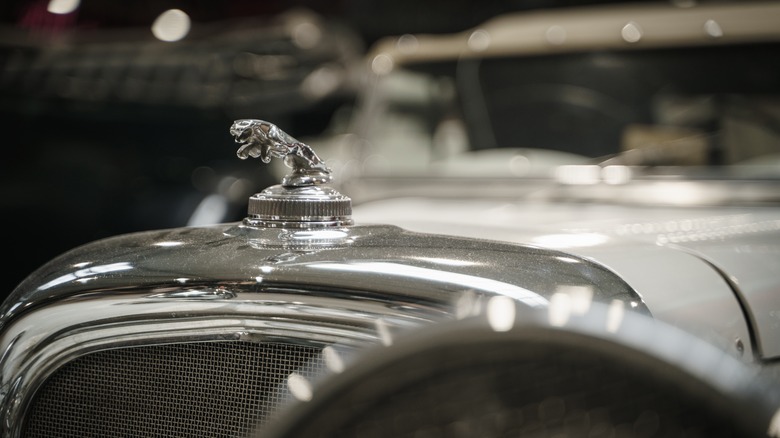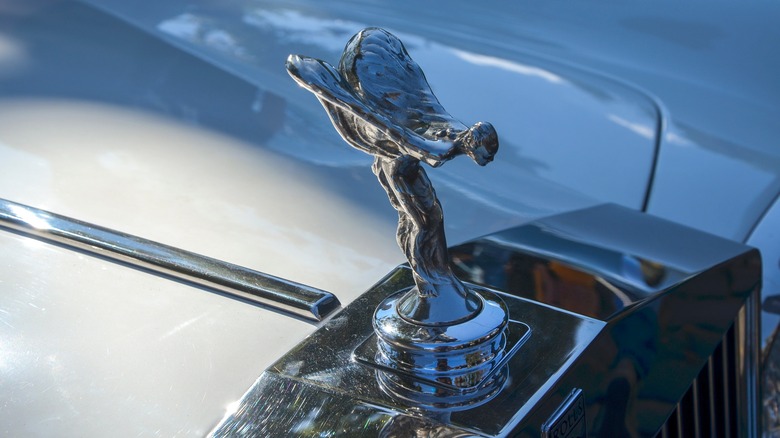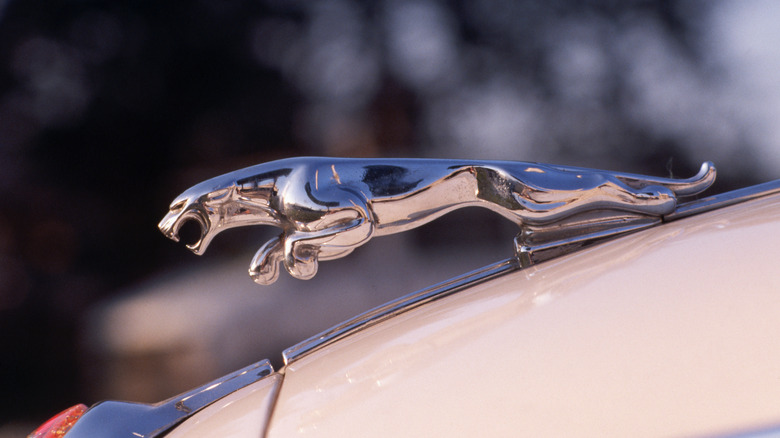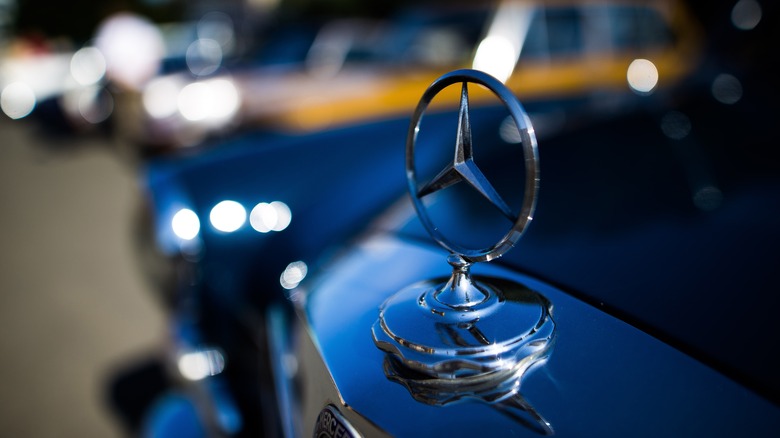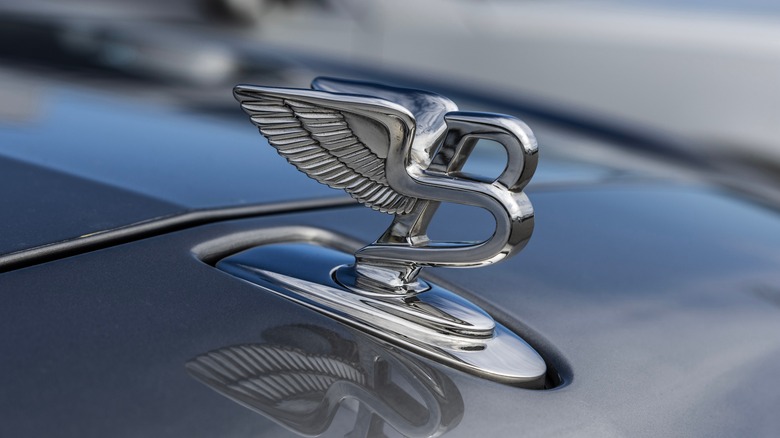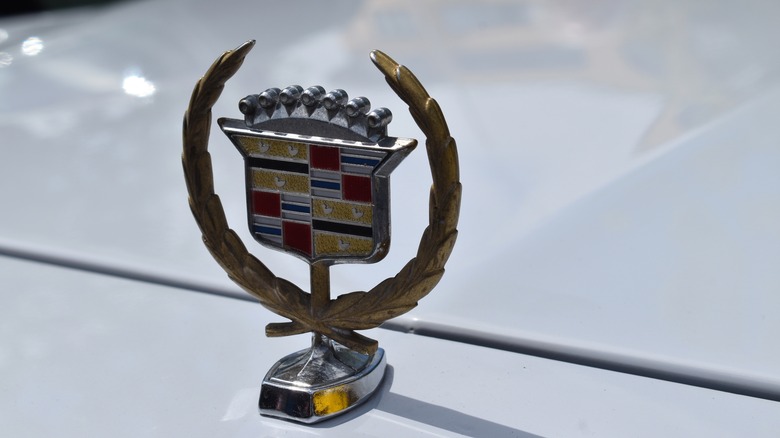5 Of The Most Famous Car Hood Ornaments In History
As far back as the 1920s, certain models of car have had distinctive hood ornaments. In the olden days, hood ornaments were used to cover up the jutting point of a car's radiator cap with something a little more chic and stylish, but after cars stopped using radiator caps, they became more of an opportunity for automotive brands to create their own distinctive vibe. These days, hood ornaments have largely been phased out, to the point that you typically only find a hood ornament on a high-end vehicle from one of the world's luxury brands. It's a small, yet poignant statement that your car and, by extension, you, have got both style and cash in spades.
For many luxury car brands, the distinctive hood ornaments can be even more iconic than the brand's actual logo. It makes sense; if you see a car driving out of a garage, sunlight glinting off the hood, that hood ornament is going to be the first thing you see, shining in the afternoon glow. If you see a certain kind of hood ornament, then right away you know that is one fancy set of wheels.
The Rolls-Royce Spirit of Ecstasy was modeled after the founders' muse
Rolls-Royce has always been something of an ostentatious brand. It's the kind of car that absolutely demands to be seen and recognized, and in no way is that clearer than the Spirit of Ecstasy, the official Rolls-Royce hood ornament. It's a bit of a dramatic name, but let nobody say Rolls-Royce is afraid to get dramatic.
The Spirit of Ecstasy is cast in the image of a goddess, clad in long, flowing robes blown back in the wind. The Spirit of Ecstasy has been an official Rolls-Royce mascot as far back as 1909, gracing the hoods of cars as a delicate platinum statuette. Interestingly, according to Rolls-Royce's official history, the image of the Spirit of Ecstasy is actually based on a real person, Eleanor Thornton. Thornton was the so-called "muse" of the Automobile Club of Great Britain, a Piccadilly-based automotive enthusiast group of which Charles Rolls and Henry Royce were prominent members. The addition of the Spirit of Ecstasy to every Rolls-Royce vehicle is meant to symbolize the pure pursuit of automotive greatness, seekers of speed-based thrills, and a breakaway from conformity.
The Jaguar Leaper gave the cars their fearsome image
Some automobiles have an almost animalistic nature to them, with fearsome engines and sloped profiles evocative of a predator animal bounding across the wild plains. One good example of this is the Jaguar brand, whose powerful sports cars roar down the road with a vicious vengeance. Jaguar vehicles don't do hood ornaments anymore, but in spite of that, the image of the leaping wild cat still endures in our collective memories thanks to the prominence of the Jaguar Leaper hood ornament.
The Jaguar Leaper is pretty much exactly what it sounds like: an image of a jaguar seemingly leaping right off the hood of your car. The story goes that Sir William Lyons, original founder of the company that would go on to become Jaguar, happened to see an individual driving a Jaguar vehicle in the early 1930s. What caught his eye was an unofficial hood ornament which, to him, looked like a stray cat being shot off a fence. Unsatisfied with this, Lyons commissioned the creation of a much more noble-looking feline, which started to grace vehicles in 1938. The Leaper would go through several iterations in the following decades, gaining outstretched legs and a more defined face. Unfortunately, due to rising safety concerns from the EEC, the Leaper was ultimately phased out of Jaguar designs for good in 2005.
The Mercedes-Benz Three-Pointed Star represented the founder's dream
Luxury car brand logos and mascots, and by extension the hood ornaments made from them, don't always need to be elaborate, carefully carved statuettes. Sometimes, less is more, as is the case with the simple, yet elegant Three-Pointed Star hood ornament present on Mercedes-Benz vehicles. The Three-Pointed Star is the regular Mercedes-Benz logo, visible on its vehicles either as a hood ornament or a badge.
The Three-Pointed Star logo and hood ornament was conceived by the sons of the original Mercedes-Benz founder, Gottlieb Daimler. It was Daimler's dream that one day, the engines created by his family's company would be used to power vehicles across the land, the sea, and the air. The three points on the Mercedes-Benz logo are meant to represent these three dreams. Originally, the logo was just the star, but following the merger of Daimler and Benz in 1926, the outline circle was added to the logo to represent the burgeoning brand's desire to bring automotive superiority to the entire world.
The Bentley Flying B was simple, yet bold
It takes a certain level of guts to try and co-opt one of the letters of the alphabet as your company's personal logo, to say "this character, formerly universal, now refers to the one thing I say it does." If we could expect that level of guts from anything, it would certainly be a luxury automotive brand, particularly one like Bentley. While some Bentley vehicles have simpler winged B badges on the hood, others opt for the brand's official mascot hood ornament, the Flying B. It's a capital B with swept-back wings, brilliant in its simplicity.
The Flying B was conceptualized as far back as the mid-1920s by artist F. Gordon Crosby. Interestingly, Crosby's first concept for a Bentley hood ornament was a small statuette of the Greek mythological character Icarus, though this was ultimately scrapped for unspecified reasons. Instead, the Flying B would become the brand's mascot of choice. The ornament has gone through six iterations since then, with modern iterations of the mascot featuring a cool retracting mechanism to pop in and out of the hood.
The Cadillac Wreath and Crest is packed with symbolism
The Cadillac automotive brand has one of the oldest pedigrees in the world, dating all the way back to 1906. Over the past hundred years and change, the Cadillac logo, officially known as the Wreath and Crest, has gone through 30 different tweaks and revisions to reflect the company's evolving desires and sensibilities through the ages. In addition to being the brand's official badge, the Wreath and Crest also serves as its official mascot hood ornament.
Both the hood ornament and the badge always use the same coloration in its various geometric shapes. According to Cadillac, each of the colors used in the Crest represent a different virtue: the black stripe over the gold square represents the balance of wealth and wisdom, the red squares represent skill and strength, the silver bars represent purity, charity, and generally virtuous behavior, and the blue bars represent the classic valor of a knight. All of this is bordered by the platinum Wreath, a little punctuation to remind everyone of how valuable the brand's offerings are.
